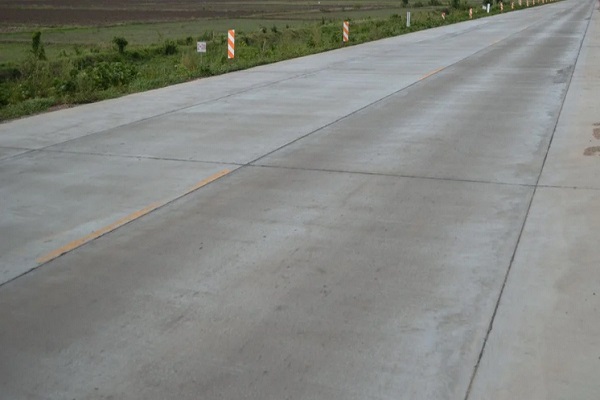Concrete roads are a popular choice for transportation infrastructure due to their durability, long lifespan, and low maintenance requirements. These roads are known for their durability, comfort, and performance.
This article provides an overview of concrete roads, discussing their types, advantages, and drawbacks.

Types of Concrete Roads:
- Jointed Concrete Pavements: These are the most common type of concrete roads, consisting of slabs with transverse and longitudinal joints to control cracking and expansion. They are suitable for highways and urban roads.
- Continuously Reinforced Concrete Pavements (CRCP): This type of concrete road has continuous steel reinforcement to minimize the occurrence of joints and reduce maintenance needs. CRCP is ideal for heavy traffic areas and airports.
- Prestressed Concrete Pavements: In this type, high-strength steel strands are tensioned before pouring the concrete, resulting in enhanced load-bearing capacity and crack resistance.
Benefits of Concrete Roads:
- Durability: Concrete roads can withstand heavy traffic loads, weather extremes, and environmental factors better than other road materials, making them more durable and long-lasting.
- Low Maintenance: Once constructed, concrete roads require minimal maintenance, reducing overall lifecycle costs compared to other road types.
- Smooth Riding Surface: Concrete roads offer a smoother and quieter ride for vehicles, enhancing comfort and reducing wear and tear on vehicles.
- Reflective Properties: Concrete’s light color reflects more sunlight than asphalt, which can help reduce the urban heat island effect and improve visibility at night.
- Fuel Efficiency: Vehicles driving on concrete roads often experience lower rolling resistance, leading to improved fuel efficiency.
Disadvantages of Concrete Roads:
a. Initial Cost: Constructing concrete roads can be more expensive than asphalt roads due to higher material and labor costs.
b. Time-Consuming Installation: The process of laying concrete and allowing it to cure takes longer, which can lead to temporary traffic disruptions during construction.
c. Cracking Potential: Concrete is prone to cracking over time due to temperature changes and settlement, necessitating joint maintenance to control cracks.
d. Lesser Skid Resistance: Concrete roads may offer less skid resistance than asphalt, especially in wet conditions, potentially impacting vehicle braking performance.
e. Limited Repair Options: If severe damage occurs on concrete roads, repairs can be challenging and costly.
Conclusion:
Concrete roads are a reliable choice for modern transportation infrastructure, offering a host of benefits such as durability, low maintenance, and fuel efficiency. However, they also come with some disadvantages, including higher initial costs and potential cracking issues. Engineers and policymakers must weigh the pros and cons while considering the specific needs of each project to make informed decisions on road construction materials










